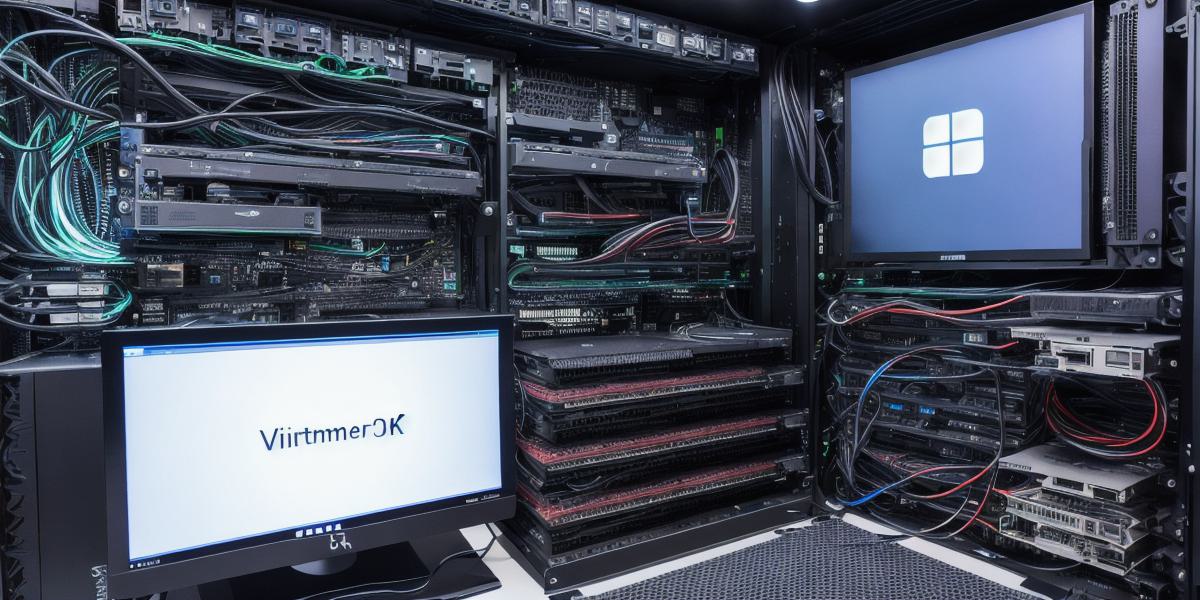Setting Up Your Own Server: A Step-by-Step Guide for Programmers

As a programmer, setting up your own server can provide numerous benefits such as greater control over your infrastructure and faster performance. However, the process of setting up a server can be overwhelming, especially for those who are new to it. In this article, we will take you through the step-by-step process of setting up your own server, and how to optimize it for performance using SEO techniques.
Why Set Up Your Own Server?
Setting up your own server can provide numerous benefits such as greater control over your infrastructure, faster performance, and better security. By setting up your own server, you have complete control over the hardware, software, and configurations that make up your infrastructure. This allows you to tailor your server to your specific needs and requirements. Additionally, by hosting your own server, you can enjoy faster performance as you have direct access to the hardware and resources. Finally, setting up your own server can provide better security as you have complete control over the firewall, intrusion detection system, and other security features.
Choosing Your Server
The first step in setting up your own server is choosing the right one for your needs. There are several factors to consider when choosing a server, including:
- Hardware specifications: The hardware specifications of the server will determine its performance and scalability. Factors to consider include CPU speed, RAM, storage capacity, and network bandwidth.
- Operating system: The operating system (OS) you choose will determine the software and applications that can run on the server. Popular OS options include Linux, Windows, and macOS.
- Cloud hosting vs dedicated hosting: Cloud hosting allows you to rent space on a shared server, while dedicated hosting provides a dedicated server for your exclusive use.
Once you have chosen your server, you will need to purchase it and set it up. This process can vary depending on the provider and hardware specifications of the server.
Configuring Your Server
After setting up the server, the next step is configuring it for optimal performance. Some key configurations to consider include:
- Firewall settings: Configuring the firewall to allow only the necessary traffic can improve security and reduce the risk of attacks.
- Intrusion detection system (IDS): Setting up an IDS can help detect and prevent malicious activity on your server.
- Performance tuning: Optimizing server performance by tweaking configurations such as caching, compression, and database settings.
Optimizing Your Server for SEO
To optimize your server for search engines (SEO), you will need to consider several factors, including:
- Load times: Slow load times can negatively impact search engine rankings. To improve load times, optimize images, minify code, and use a content delivery network (CDN).
- Server response time: The server response time is the amount of time it takes for the server to respond to a request from the user. By optimizing your server configuration, you can reduce server response time.
- Mobile optimization: With more people accessing the internet via mobile devices, it’s important to ensure that your website and server are optimized for mobile users.
Case Study: A Programmer’s Journey to a High-Performing Server
Let’s take a look at a real-life example of how a programmer was able to set up their own server and optimize it for performance.
John is a web developer who has been struggling with slow load times on his website. He decides to set up his own server in order to have greater control over the infrastructure and improve performance. After setting up the server, John configures the firewall to allow only necessary traffic, sets up an IDS, and optimizes the server for performance by tweaking configurations such as caching and compression.
John also uses a CDN to further optimize load times, and








